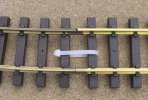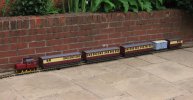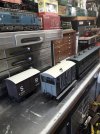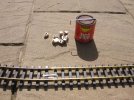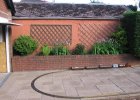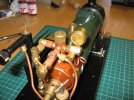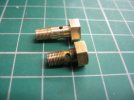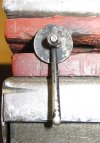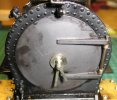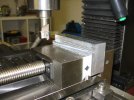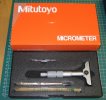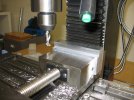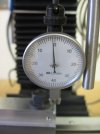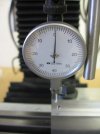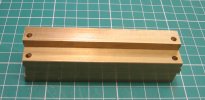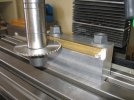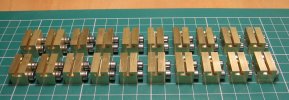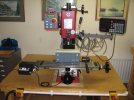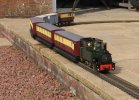Martin Shaw
Western Thunderer
Well it's a slight misnomer, oval of track behind the garage would be more accurate, but what's in a name. After two years of virtually no attention, and for various health reasons none at all last year I decided this summer would be an outdoor one, and also the great nieces and nephews were starting to complain, egged on by their parents, that they weren't allowed to play with grandad's train. The Accucraft Countess needed an overhaul, oil was literally dripping off the running gear and the bottom tapping of the gauge glass was furred up, indeed I think it's been like that since I acquired it, and the radio gear was also showing its age. Whilst all that's in hand, the director of the company has dipped into the childs inheritance and purchased new trains. A secondhand Roundhouse Harlech Castle has transformed the motive power department, although it does need a complete radio overhaul, new parts have arrived from Fosworks for that, and some titivation to the paint work. This does allow small children and inexperienced adults a chance to play without the danger of 3rd degree burns or expensive empty boiler mistakes. Also arrived in the C&W department some emigre rolling stock from the IoM, an investment the comptroller of finances was informed.
Meanwhile the PWay has also been in the process of upgrading, new more solid fishplates were deemed necessary after the predations of the local fox population, basically a copy of the Accucraft unit but home brewed on the milling machine, ultimately probably not much cheaper but some sense of satisfaction even if a tad boring after a while. The railway has 32 rail joints, a satisfactory trial pair were made and this is nos 3 to 12 underway, probably finish them tomorrow depending on the weather. I though I had a decent pic of the new train but apparently not, so again, tomorrow if it's sunny. Nothing very serious or finescale here but it's fun and when the wains turn up next, Grandad's going to be super popular for a change.
Regards
Martin
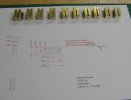
Meanwhile the PWay has also been in the process of upgrading, new more solid fishplates were deemed necessary after the predations of the local fox population, basically a copy of the Accucraft unit but home brewed on the milling machine, ultimately probably not much cheaper but some sense of satisfaction even if a tad boring after a while. The railway has 32 rail joints, a satisfactory trial pair were made and this is nos 3 to 12 underway, probably finish them tomorrow depending on the weather. I though I had a decent pic of the new train but apparently not, so again, tomorrow if it's sunny. Nothing very serious or finescale here but it's fun and when the wains turn up next, Grandad's going to be super popular for a change.
Regards
Martin

Last edited:

